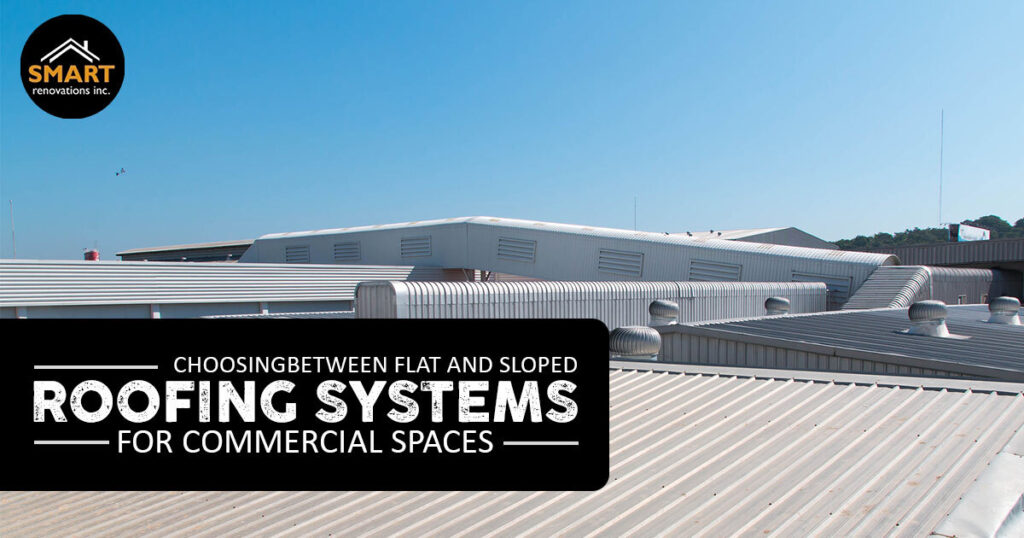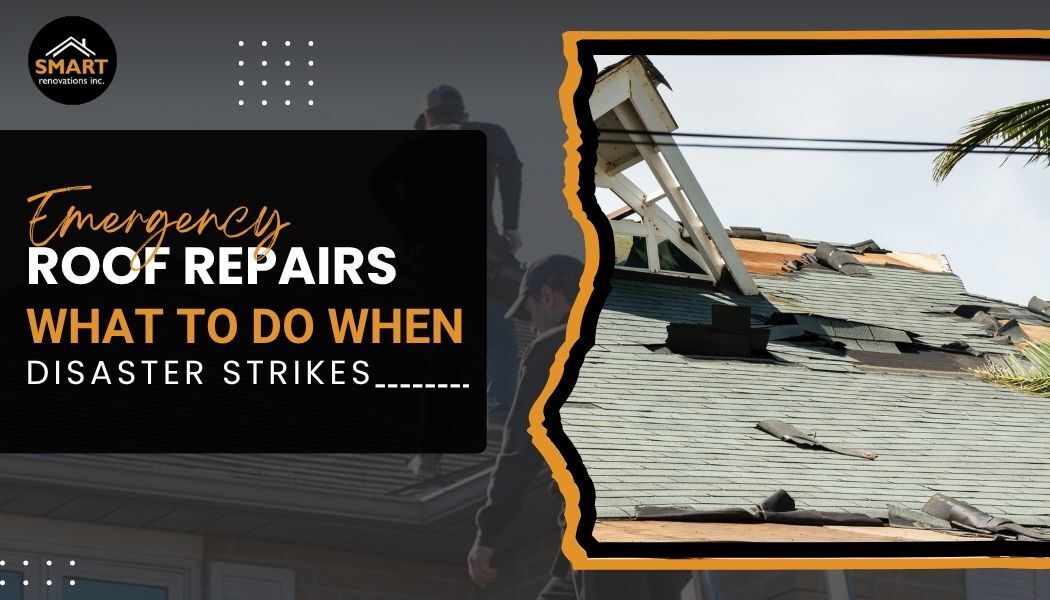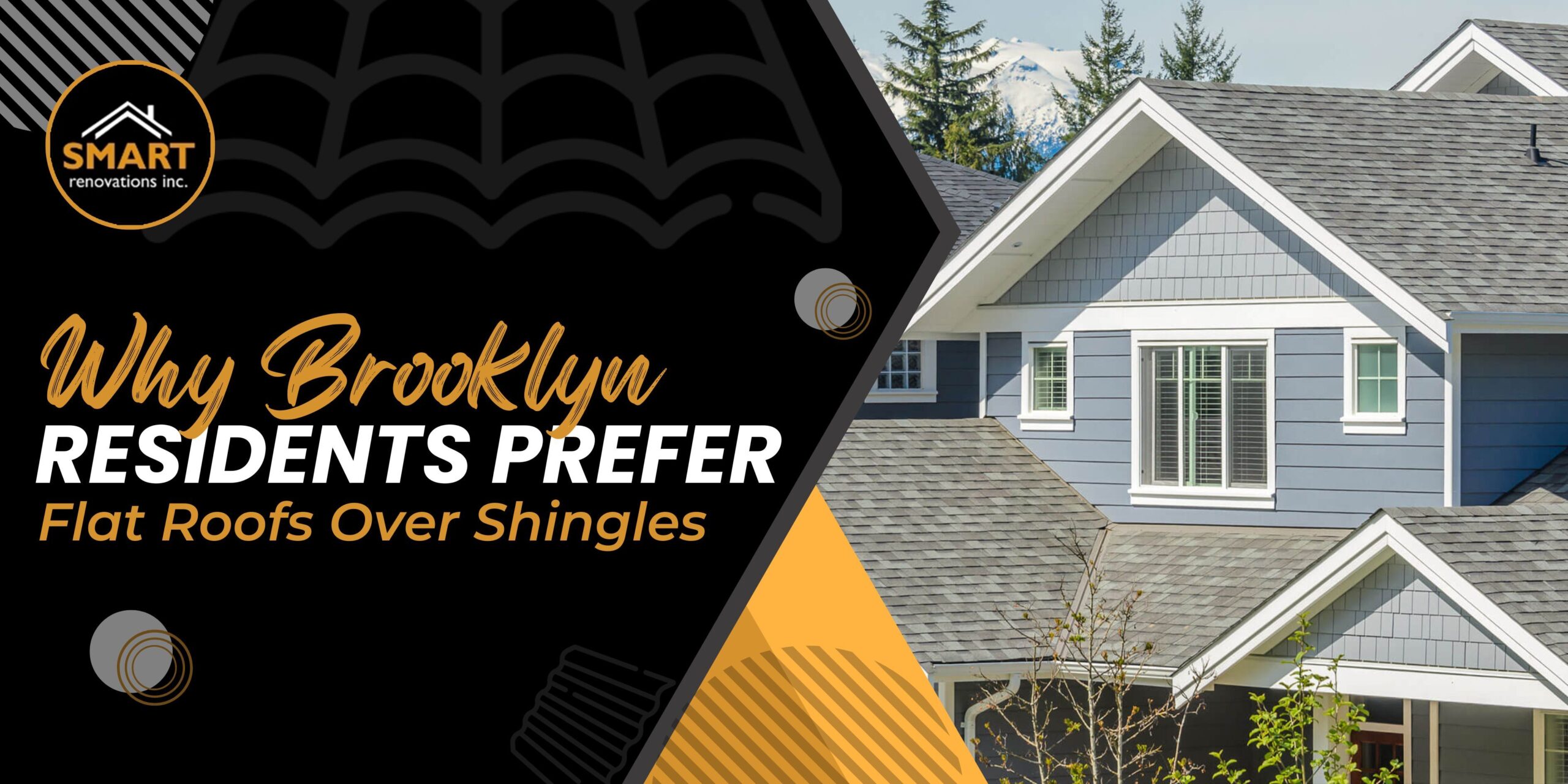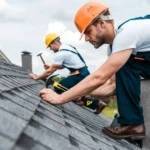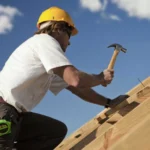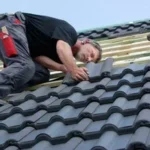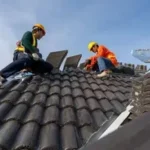When deciding on a roofing system for a commercial space, choosing between a flat and sloped roof is a crucial decision. Many roofing styles have benefits as well as disadvantages, so it depends on the building’s functionality, location, and budget. If chosen correctly, flat and sloped roofing are suitable for commercial properties. This blog explains the pros and cons of each roofing type to help you choose. We will also discuss how EPDM rubber roofing contractors maintain and install commercial flat roofing.
Flat Roofing Systems
Flat roofing is commonly used in commercial buildings and there are many good reasons for this. They enhance the design, are easier to maintain, and might be cheaper initially than the sloping ones.
Advantages of Flat Roofing
- Cost-Effective Installation: The installation of flat roofs is cost-effective due to the following reasons: Flat roofs use less material than others. Simple designs allow for cheaper craftsmanship, making them ideal for business people looking to cut costs.
- Space Utilization: Flat roofs offer valuable utility for informal purposes. Flat roofs are preferred for HVAC system, installation of solar panels and rooftop gardening by many organizations. The use of a system for commercial applications can therefore be particularly advantageous in space constrained environments.
- Ease of Maintenance: A flat roof is convenient to access for repairs and attracts fewer charges than the sloping roof. It is unlike the existent slopped roof in that the maintenance can be arranged without calling for equipment. Bad and good EPDM work well in many applications and the flexible material is cheap, thus most buildings utilize it to repair flat roofs.
- Modern Aesthetics: Flat roofs offer benefits, including a modern appearance, which is particularly useful in commercial buildings. Flat roofs blend with urban scenery, so many businesses prefer them.
Disadvantages of Flat Roofing
- Water Drainage Issues: Flat roofs may have drainage issues if not properly addressed. Flat areas eventually leak or damage property due to water accumulation. Maintenance procedures such as Waterproofing and facet check up are very necessary. Many of the EPDM roofing contractors advocate for the use of the EPDM membranes as they do not allow water to pool, which leads to this problem.
- Shorter Lifespan: Some people even consider flat roofs to be less durable than the sloped ones. Maintained properly, EPDM rubber roofs can last 25–30 years; however, other flat roofing types may malfunction due to wear and tear and leakage problems, necessitating frequent repair or total replacement.
- Temperature Regulation: Flat roof louvers prove beneficial in hot climates as they improve heat transfer. The absence of a roof slope allows direct solar light into homes, warming indoors. Reflective surfaces and green roofing systems eliminate this problem, albeit at a premium.
Sloped Roofing Systems
Sloped roofs are common in homes but also in businesses. A pitched roof has the following benefits and a more traditional look.
Also check out these:
Commercial Roofing for Schools: Types, Materials & Maintenance
Simplifying Commercial Roofing Costs: What to Anticipate for Your 2024-25 Project
Advantages of Sloped Roofing
Excellent Water Drainage: The main benefit of sloped roofs is good water drainage, which prevents water from entering the building. They employ the pitch to shed water, snow and dirt off roofs and help to eliminate leaks and water damage. Mortgages and dealers can be told that a sloped roof offer safety in the event of a rain or even snow.
Durability: People understand that roofs with slopes are more enduring than flat kinds of roofs. This makes draining easier, does not allow the formation of water pools, mould, or mildew, and hence makes it durable. Sloped roofing systems may be found in mid-rise commercial buildings, and their lifespan ranges over 50 years based on the material used.
Improved Insulation: These roofs can enhance or hamper the manner in which a building is insulated, hence the indoor climate. Roof slope may also be used as an insulator; heating and cooling costs will be significantly reduced.
Aesthetic Appeal: Most commercial buildings have sloping roofs for a traditional look. Conservative images can boost a site’s credibility or give it a suburban or rural look.
Disadvantages of Sloped Roofing
- Higher Initial Costs: Sloped roofs cost more than flat roofs. The complexity of the design, extra material, and extra working hours raise the product’s cost significantly. Its slightly longer lifespan and lower maintenance costs may offset its costs over time.
- Limited Usability: Sloped roofs have less functional space above the roof level compared to flat roofs. Air conditioning and solar systems are difficult and expensive to repair on sloped roofs.
- Complex Repairs: Slope roofs are stronger than flat roofs, but repair work is often expensive and complicated. Sloped roofs are dangerous and require special tools and skilled workers. It may increase the cost of standard checks, modifications, upgrades, and repairs.
Choosing the Right Roofing System
Choosing between flat and sloped commercial roofing systems depends on several factors:
Budget: Flat roofs are relatively cheap to construct than other types of roofs, but they need more attention as they age. Sloped roofs cost more to install but last longer and have few water issues.
Climate: A sloped roof is recommended for commercial buildings in areas with heavy rainfall or snowfall to aid in water runoff. Flat roofs can be optimised with waterproofing materials by EPDM roofing contractors.
Aesthetic Preferences: Building appearance impacts customer perception of your business. Flat roofs may be best for modern, streamlined homes. A sloped roof is better for a classical or colonial look.
Also check out these:
Innovations in Commercial Roof-Mounted Solar Power Systems
Optimizing Natural Light: Skylights and Day lighting Systems
The Role of ‘EPDM Roofing Contractors’
EPDM roofing contractors are essential for commercial buildings adopting flat roofing systems. EPDM is a durable, affordable, water-resistant, and easy-to-install flat roofing material. Expert EPDM roofing contractors use synthetic rubber membranes to make roofs leak-proof. Common maintenance by EPDM roofing contractors ensures that your flat roof will last and that you won’t need major repairs soon. Professional EPDM roofing contractors can help you get the best flat roofing system.
Conclusion
Each type of roof system, flat and sloped, has its benefits and drawbacks when it comes to a commercial building. One major advantage of specifying a flat roof design is its cost efficiency, relative sleek look, and capability of enabling additional story or roof top installation based on occupancy needs.On the other hand, a sloping roof design benefits by good rain water management, robust construction to extreme weather conditions, and good insulation properties. Still, choosing between the two depends on the needs of the building, estimate, and geographical area. Selecting a flat roof, will help you get good EPDM roofing contractors who will give you the best roof that is both durable and efficient.
Check our google store: Smart Renovation

